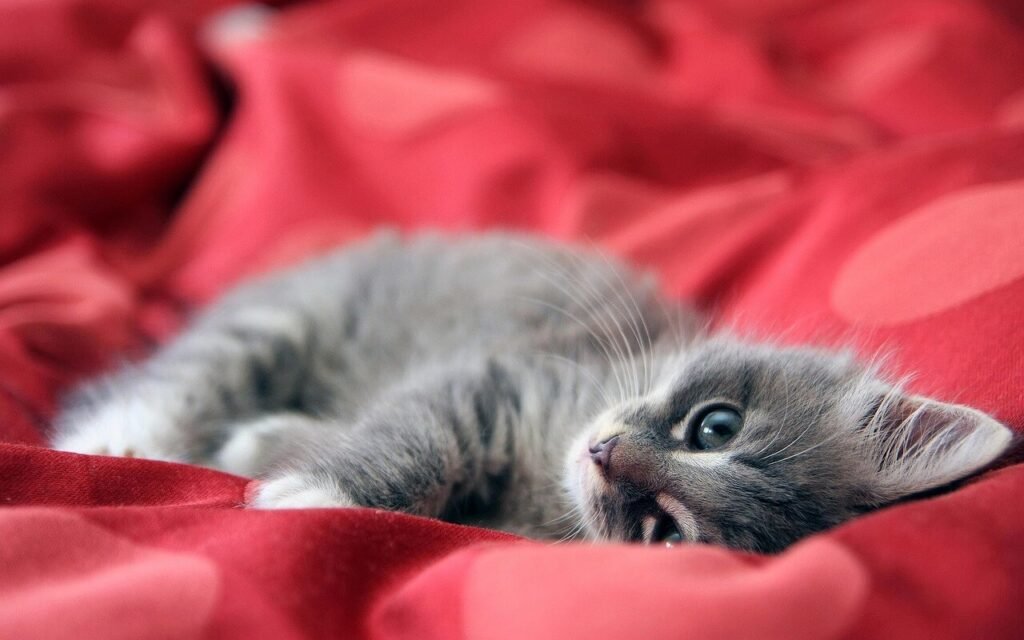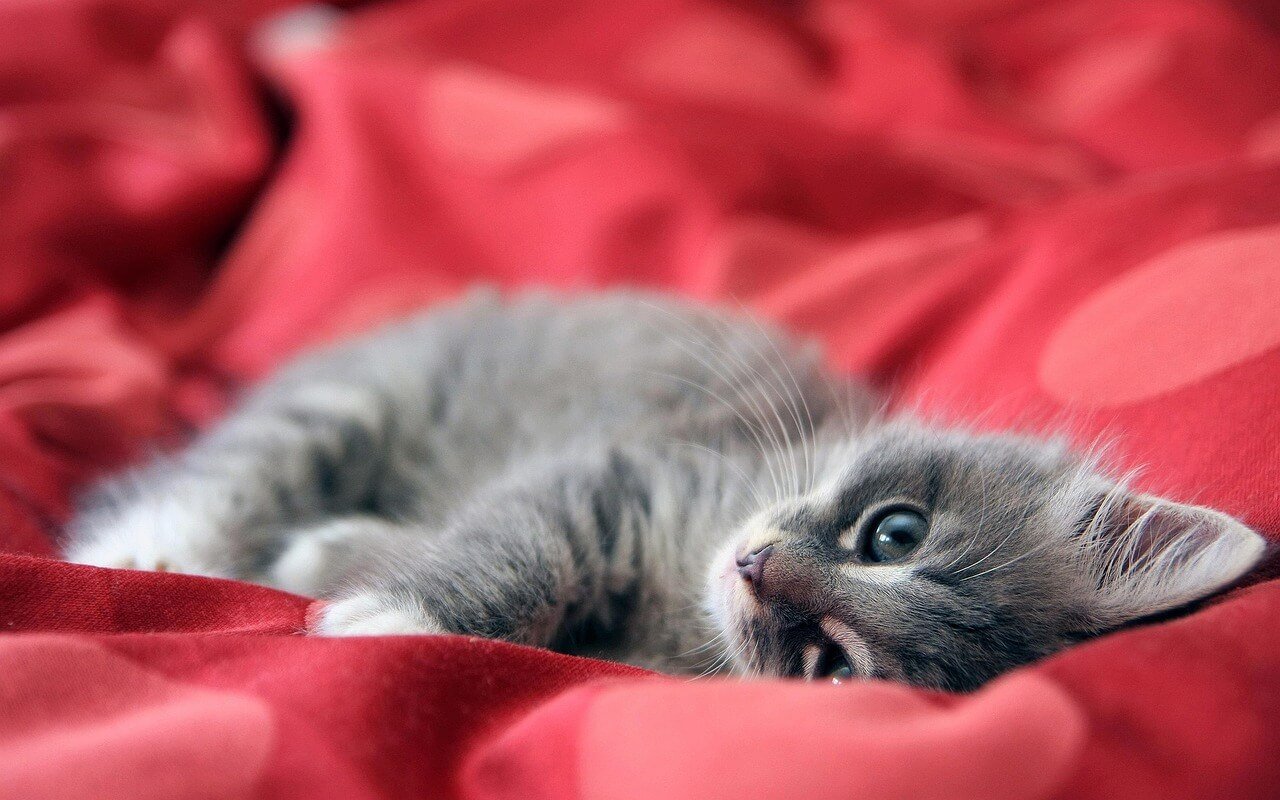Cat Chin Mites vs. Acne: Understanding the Difference
If you’ve noticed small bumps, redness, or scaly patches on your cat’s chin, you might be wondering whether it’s caused by chin mites or feline acne. While both conditions affect the chin area and share some similar symptoms, they have distinct causes, treatments, and implications for your cat’s health. Understanding the differences between these two issues is crucial to ensuring your furry friend receives the right care. In this blog post, we’ll explore the signs, causes, and treatment options for chin mites and acne, helping you identify what’s affecting your cat and how to address it effectively.
Key Differences Between Cat Chin Mites and Acne
While chin mites and acne may look similar at first glance, there are important distinctions that can help you differentiate between the two. Here’s what you need to know:
Cause of the Condition:
Chin mites are caused by microscopic parasites that burrow into the skin, while feline acne results from blocked hair follicles and oil buildup.Appearance of Symptoms:
Chin mites often lead to intense itching, redness, and crusting, whereas acne typically presents as blackheads, pustules, or a greasy chin.Behavioral Changes:
Cats with chin mites may scratch excessively or rub their face against surfaces due to irritation, while those with acne usually don’t exhibit behavioral changes.Contagiousness:
Chin mites are highly contagious and can spread to other pets, but feline acne is not contagious and affects only the individual cat.Diagnosis Process:
A vet can confirm chin mites through skin scrapings or microscopic examination, while acne is diagnosed based on visual inspection and ruling out other conditions.
Understanding these differences allows you to seek appropriate treatment and prevent further complications for your cat.

Symptoms of Cat Chin Mites
Chin mites can cause significant discomfort for your cat, and recognizing the symptoms early is key to addressing the issue promptly. Here’s what to look for:
Intense Itching and Scratching:
Cats with chin mites often scratch their chin repeatedly or rub their face on furniture to relieve irritation.Red, Inflamed Skin:
The affected area may appear red, swollen, or irritated due to the mites’ activity beneath the skin.Crusty or Scaly Patches:
As the condition progresses, the skin may develop crusty, flaky patches that resemble dandruff.Hair Loss Around the Chin:
Persistent scratching can lead to thinning fur or bald spots in the chin area.Secondary Infections:
Open sores or broken skin caused by scratching can become infected, worsening the condition.
If you notice any of these symptoms, consult your veterinarian immediately to confirm the diagnosis and begin treatment.
Check this guide 👉Black Spots on Cat Chin: Best 7 Expert Tips!
Check this guide 👉Flea Poop on Cat Chin: Best 7 Expert Tips!
Check this guide 👉Cat Acne Treatment: Best 7 Expert Tips!
Signs of Cat Chin Mites | Signs of Feline Acne |
|---|---|
Intense itching and scratching | Blackheads or dark specks on the chin |
Red, inflamed, and irritated skin | Greasy or oily appearance of the chin |
Crusty or scaly patches | Pustules or raised bumps |
Hair loss around the affected area | No itching or behavioral changes |
Highly contagious to other animals | Non-contagious and isolated to one cat |
Treatment Options for Cat Chin Mites
Treating chin mites requires targeted intervention to eliminate the parasites and soothe your cat’s skin. Here’s an overview of common treatment methods:
Topical Medications:
Prescription ointments or sprays containing anti-parasitic ingredients can kill mites and reduce inflammation.Oral Medications:
In severe cases, oral medications like ivermectin may be prescribed to eradicate mites from within the body.Medicated Shampoos:
Specialized shampoos designed to treat parasitic infections can help cleanse the affected area and promote healing.Environmental Cleaning:
Wash your cat’s bedding, toys, and grooming tools to prevent reinfestation and protect other pets in the household.Veterinary Follow-Up:
Regular check-ups ensure the treatment is working and allow your vet to adjust the plan if necessary.
With proper care and adherence to your vet’s recommendations, chin mites can be successfully treated, restoring your cat’s comfort and health.
Managing Feline Acne Effectively
Feline acne is a manageable condition with the right approach to hygiene and skincare. Here’s how you can address and prevent flare-ups:
Regular Cleaning:
Gently clean your cat’s chin with a damp cloth or pet-safe wipes to remove dirt and excess oil.Switching Food Bowls:
Use stainless steel or ceramic bowls instead of plastic, as plastic can harbor bacteria that worsen acne.Avoid Harsh Products:
Refrain from using human skincare products on your cat, as they can irritate sensitive skin.Warm Compresses:
Applying warm compresses to the affected area can help loosen debris and unclog pores.Prescription Treatments:
For persistent cases, your vet may recommend medicated gels or antibiotics to clear up the acne.
By maintaining good hygiene and addressing underlying causes, you can keep your cat’s chin healthy and acne-free.
Preventive Measures for Chin Issues
Preventing chin problems in cats involves proactive care and attention to potential triggers. These tips can help minimize the risk of chin mites and acne.
Regular Grooming:
Brush your cat’s fur and clean their chin regularly to prevent oil buildup and detect issues early.High-Quality Diet:
Feed your cat a balanced diet rich in omega-3 fatty acids to promote healthy skin and reduce inflammation.Clean Environment:
Keep your cat’s living space clean, including their bedding, toys, and feeding area, to reduce exposure to allergens and parasites.Monitor Behavior:
Pay attention to excessive scratching or rubbing, as these behaviors may indicate an underlying issue.Routine Vet Check-Ups:
Schedule regular vet visits to catch and address potential health concerns before they escalate.
Taking these preventive steps can significantly reduce the likelihood of chin-related problems in your cat.
Common Misconceptions About Chin Conditions
Misunderstandings about chin mites and acne can lead to improper treatment. Clearing up these misconceptions ensures you provide the best care for your cat.
“It’s Just Dirt”:
Blackheads or scabs on the chin are not simply dirt—they could indicate acne or mite infestations requiring treatment.“Acne Is Rare in Cats”:
Feline acne is more common than many owners realize, especially in cats prone to oily skin.“Mites Only Affect Outdoor Cats”:
Indoor cats can also contract mites, often through contact with other pets or contaminated items.“Over-the-Counter Products Are Enough”:
Human skincare products or unapproved treatments can worsen the condition—always consult a vet first.“It Will Go Away on Its Own”:
Both mites and acne require intervention; ignoring them can lead to chronic issues or secondary infections.
Dispelling these myths helps you approach chin conditions with knowledge and confidence.
When to Seek Emergency Care
While most chin issues are treatable at home or with veterinary guidance, certain signs warrant immediate attention. Recognizing these red flags ensures your cat receives timely care.
Severe Swelling or Bleeding:
Significant swelling or open wounds on the chin may indicate a serious infection or injury.Lethargy or Loss of Appetite:
If your cat seems unusually tired or refuses to eat, it could signal systemic illness related to the chin condition.Difficulty Breathing:
Swelling that spreads to the throat or mouth can obstruct breathing—a medical emergency requiring urgent care.Pus or Discharge:
Excessive pus or foul-smelling discharge suggests a bacterial infection that needs professional treatment.Sudden Worsening of Symptoms:
Rapid escalation of symptoms, such as increased redness or pain, indicates the need for immediate veterinary evaluation.
Knowing when to act quickly can make all the difference in protecting your cat’s health and well-being.
Frequently Asked Questions About Cat Chin Mites and Acne
Can humans catch chin mites from cats?
No, chin mites are species-specific and cannot infect humans.
Is feline acne curable?
While it may not be completely curable, it can be managed effectively with proper care.
How long does treatment for chin mites take?
Treatment duration varies but typically lasts several weeks.
Should I pop my cat’s pimples?
No, popping pimples can lead to infection. Consult a vet instead.
Can diet affect feline acne?
Yes, certain foods or allergens may exacerbate the condition.
Caring for Your Cat’s Chin Health
Whether your cat is dealing with chin mites or acne, understanding the underlying cause and seeking appropriate treatment is essential for their well-being. By staying vigilant about symptoms, practicing good hygiene, and consulting your veterinarian when needed, you can ensure your feline companion enjoys a happy, healthy life. Remember, early intervention and consistent care make all the difference in managing these common yet treatable conditions. With patience and dedication, your cat’s chin will soon be back to its smooth, comfortable self.
Canned Pumpkin for Cat Diarrhea: Best 7 Expert Tips! Natural remedy to firm stools, soothe upset bellies, and support gut health safely.
Can a Cat Give You Scabies? Best 7 Expert Tips! Discover the truth about feline mites, human skin risks, and how to protect yourself—without panic.
Cat Flea vs Human Flea: Best 7 Expert Tips! Discover the truth about bites, species, and how to eliminate infestations for good.
Weird Cat Behaviors: Best 7 Expert Tips! Discover why cats do strange things—and how to understand, not punish, their instincts for a happier home.





